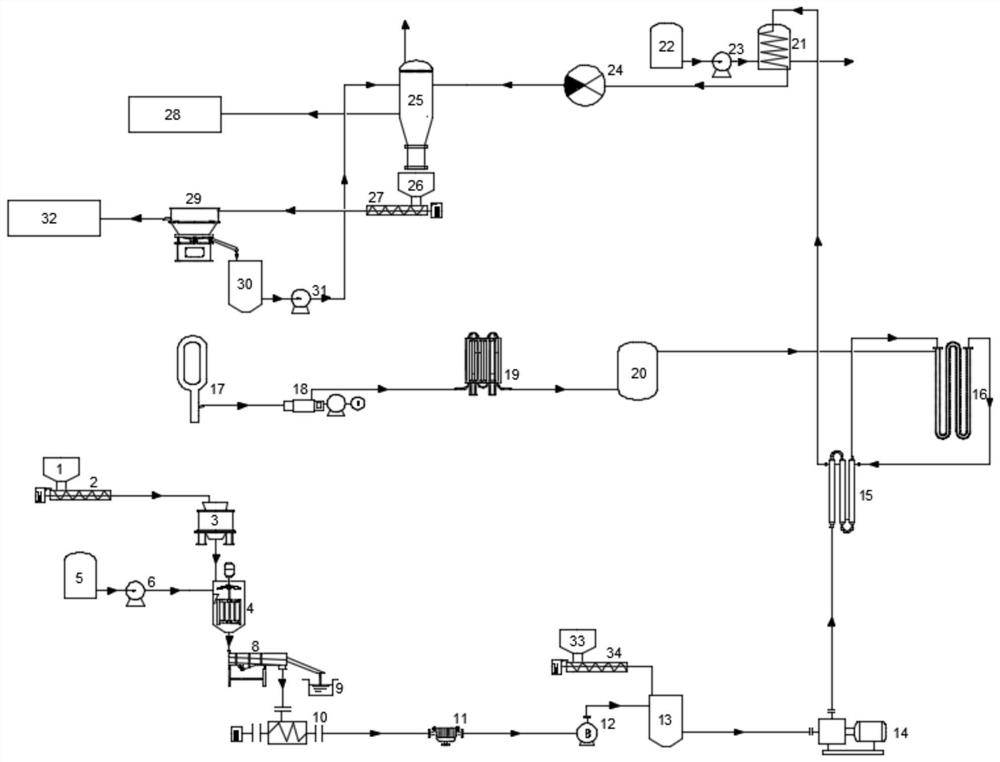Solid organic waste treatment and separation system based on supercritical water oxidation technology
A technology for supercritical water oxidation and organic waste, applied in the removal of solid waste, etc., can solve problems such as blockage, avoid salt deposition, enhance fluid turbulence intensity, and improve continuous transmission and distribution capabilities.
- Summary
- Abstract
- Description
- Claims
- Application Information
AI Technical Summary
Problems solved by technology
Method used
Image
Examples
Embodiment Construction
[0026] The present invention is described in further detail below in conjunction with accompanying drawing:
[0027] see figure 1 , the solid-containing organic waste treatment and separation system based on supercritical water oxidation technology in the present invention includes a solid-containing waste pretreatment module, a solid-containing waste preheating module, an oxidant supply module, a supercritical water oxidation module, and subsequent product cooling and pressure reduction Module, follow-up product online separation module.
[0028] In this system, each device is connected as follows:
[0029] The outlet of the solid waste silo 1 is connected to the inlet of the first screw conveyor 2, the outlet of the first screw conveyor 2 is connected to the inlet of the crusher 3, the outlet of the crusher 3 is connected to the material inlet of the solid waste preparation tank 4, and the softened water tank 5 The outlet is connected to the inlet of the softened water pum...
PUM
 Login to View More
Login to View More Abstract
Description
Claims
Application Information
 Login to View More
Login to View More - R&D
- Intellectual Property
- Life Sciences
- Materials
- Tech Scout
- Unparalleled Data Quality
- Higher Quality Content
- 60% Fewer Hallucinations
Browse by: Latest US Patents, China's latest patents, Technical Efficacy Thesaurus, Application Domain, Technology Topic, Popular Technical Reports.
© 2025 PatSnap. All rights reserved.Legal|Privacy policy|Modern Slavery Act Transparency Statement|Sitemap|About US| Contact US: help@patsnap.com

